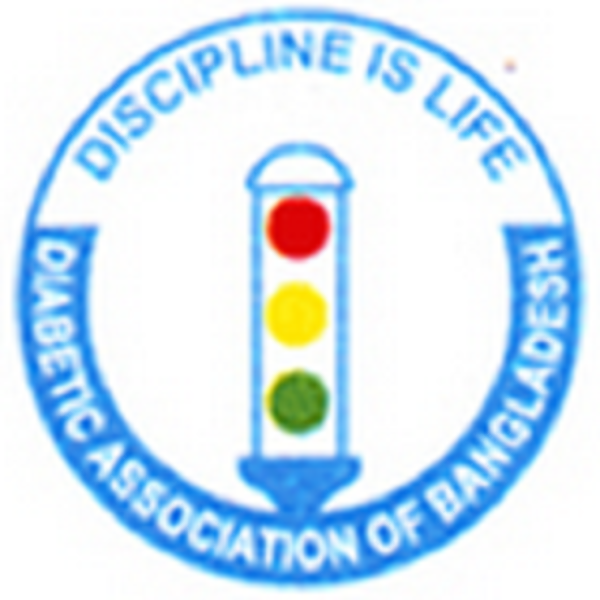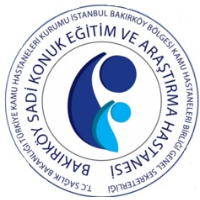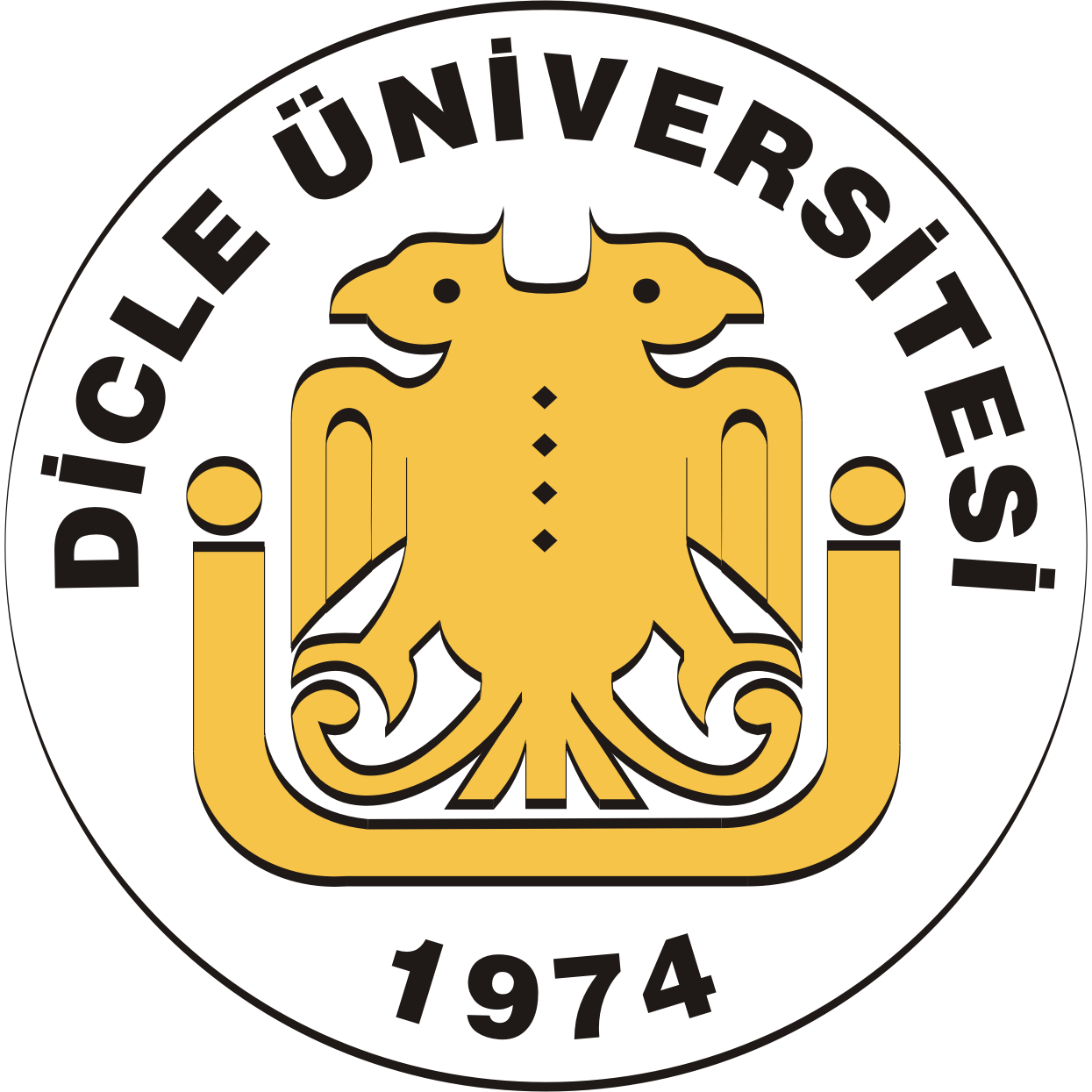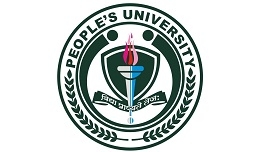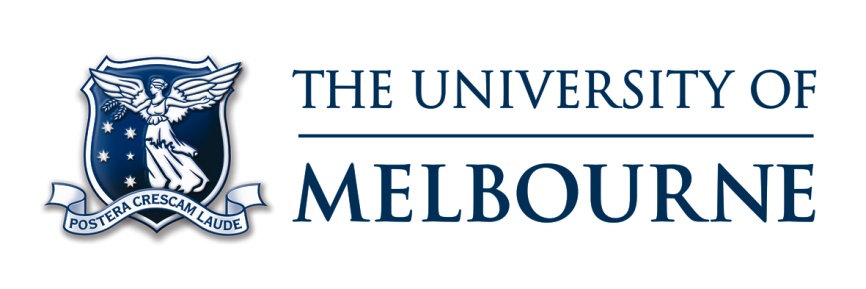Day 2 :
Keynote Forum
Md. Faruque Pathan
Bangladesh Institute of Research and Rehabilitation in Diabetes, Endocrine and Metabolic Disorders (BIRDEM), Bangladesh
Keynote: Diabetes prevention in a resource constraint country: BADAS experiences
Time : 10:10-10:50

Biography:
Prof. Md. Faruque Pathan is an eminent Endocrinologist and Diabetologist. He is the Head of the Department of Endocrinology at BIRDEM General Hospital, Dhaka, Bangladesh. Prof. MF Pathan has published several research articles and review articles including the South Asian consensus guidelines on various aspects of management of diabetes and presented research papers at various national and international conferences.
Abstract:
The World is passing through a pandemic of type 2 diabetes (T2DM). It has been recognized pandemic initially by International Diabetes Federation (IDF), then by WHO and from 2006 by United Nations. Bangladesh played the most vital role for this UN resolution for the UN day on diabetes (Nov 14 every year). Currently, more than 80% of diabetic people live in developing countries, where lifestyle is changing fast due to ongoing rapid and unplanned urbanization. This is creating decreased physical activity, higher consumption of calorie-dense fast food and soft drinks, and increasing obesity. In the past, people did not realize that T2DM can be primarily prevented. A number of randomized clinical trials (RCTs) done in Finland, USA, China, and India have shown that both lifestyle and drug intervention strategies can prevent and delay the progression (50-60%) to T2DM among high-risk individuals, and this is likely to be cost-effective. For these reasons, early identification of people with undiagnosed diabetes or those at an increased risk for developing T2DM has been recommended to improve outcomes. It is particularly important for low resource societies. Diabetic Association of Bangladesh (BADAS) is the largest non-Government diabetes care provider in the world. Along with usual prevention programs, BADAS is also running several innovative programs like diabetes screening and education program in workplaces, awareness on preconception care through religious leaders, diabetes corners in religious places etc to prevent diabetes and also to reduce the complications related to diabetes in a budget constraint country like Bangladesh. Our data suggest that both lifestyle (60%) and drugs intervention (lifestyle + metformin-74%) are highly effective in preventing high-risk individuals (IGT subjects) in Bangladesh
Keynote Forum
Shirley Mcilvenny
Bond University, Australia
Keynote: Dietary management of type 2 diabetes – focusing on mitochondrial function
Time : 09:30-10:10

Biography:
S Mcilvenny, MD, MBBCh, FRCGP(UK), FRACGP is CEO of the Food Coach Institute and President of the International Association of Health and Nutrition Coaches. Formerly she was Professor of Education at Bond University, Faculty of Medicine and Health Sciences, Australia and Head of Family Medicine at Faculty of Medicine and Health Sciences at Sultan Qaboos University, Oman. Her research includes Type 2 diabetes in a developing population and she received a research grant from His Majesty’s Research Fund in the Sultanate of Oman. Her focus of interest now is how diet and nutrigenomics can influence the prevalence and progress of type 2 diabetes, particularly influencing epigenetics.
Abstract:
The cost of health care is a major concern for both developed and developing countries. The rise of chronic diseases such as Type 2 Diabetes is a significant price to pay in terms of cost to the health system in medications, hospital treatment, and management of complications, not to mention the effect of loss of productivity in the workforce. Dietary modification is the cornerstone of therapy in Type 2 Diabetes, however, this strategy rarely works as patients are given advice which is not in line with up-to-date scientific evidence, is not contextualized for their situation and does not take into account their motivation to use diet as a therapy.
As the prevalence of Type 2 Diabetes skyrockets in developed and developing countries, increasing the cost of both therapy and diabetic complications, cost-effective solutions are of paramount importance. Recent research shows we can make an impact on the prevention of type 2 diabetes by 1) employing the right dietary advice based on scientific evidence, 2) using motivational skills to move the patient into taking action e.g. regular exercise, 3) using epigenetics and nutrigenomics to guide us in our targeted prevention strategy. This can may lead many patients in potential diabetes and pre-diabetes groups away from full-blown diabetes and its costs and complications.
This presentation focuses on the role of mitochondrial function in preventing and managing Type 2 Diabetes. The importance of dietary changes to improve mitochondrial function has been overlooked as a cost-effective way to prevent the deterioration from pre-diabetes to diabetes disease and also in reducing the need for medication. The science behind mitochondrial function in Type 2 Diabetes will be explained. Specific foods, nutrients, supplements and exercise to improve mitochondrial function will be discussed.
- Diabetes Types and Symptoms | Genesis of Diabetes | Pathophysiology of diabetes | Screening of Diabetes | Technologies for the Treatment Of Diabetes
Location: Novotel Melbourne St Kilda
Session Introduction
Md Faruque Pathan
Bangladesh Institute of Research and Rehabilitation in Diabetes, Endocrine and Metabolic Disorders (BIRDEM), Bangladesh
Title: Real-life effectiveness and tolerability of initial combination therapy with vildagliptin/metformin in drug-naïve patients with T2DM (Initial): A 24-week study from asia

Biography:
Prof. Md. Faruque Pathan is an eminent Endocrinologist and Diabetologist. He is the Head of the Department of Endocrinology at BIRDEM General Hospital, Dhaka, Bangladesh. Prof. MF Pathan has published several research articles and review articles including the South Asian consensus guidelines on various aspects of management of diabetes, and presented research papers at various national and international conferences.
Abstract:
Background: Type 2 diabetes mellitus (T2DM) prevalence in South-East Asia region is on the rise and there is currently limited evidence assessing early therapeutic interventions.1 We assessed the effectiveness and safety of Initial combiNation therapy with vildagliptin/metformin In drug naïve T2DM patients In a reAl Life (INITIAL) study.
Methods: INITIAL was a 24-week non-interventional, prospective study in drug-naïve T2DM patients across Asia (Bangladesh, India, Philippines, South Korea) with documented HbA1c >7.5% (>8.0% in India), who were prescribed vildagliptin/metformin initial combination within 4 weeks of study entry according to local label.2 The primary endpoint was change in HbA1c (DHbA1c) from baseline to week 24. Key secondary endpoints were achievement of HbA1c ≤7.0% and DHbA1c by baseline subgroups (varying HbA1c category and dosage).
Results: Out of 532 enrolled patients, 457 (85.9%) completed the study. Overall, study population was relatively young with mean age 49.6±11.27 years, mean HbA1c: 9.3±1.57%, diabetes duration: 0.8±2.47 years, BMI: 26.7±4.50 kg/m2. At baseline, approximately 30% patients had hypertension, dyslipidemia or diabetes family history, and 17.9% were obese. Most patients (70.6%) received twice daily vildagliptin/metformin (mostly 50/500 mg in 53.5%) with minimal dose changes. Overall, DHbA1c from baseline was statistically significant (p<0.001) both at week 12 (−1.6±1.59%), and 24 (−1.9±1.70%), and meaningful across baseline HbA1c categories and drug dosages (Table 1). Overall, 39.6% patients achieved HbA1c ≤7.0% and mean change in body weight was −1.1±2.62 kg. 48 (9.0%) AEs including 1 (0.2%) hypoglycemic episode were reported, with no SAEs or deaths.
Conclusion: Overall, in these relatively young drug-naïve T2DM Asian patients with high baseline HbA1c and often associated with CV risk factors vildagliptin/metformin combination was associated with significant and clinically relevant HbA1c reduction from baseline. This effect was seen early at week 12, was maintained over 24 weeks and was accompanied with good glycemic control and tolerability.
Md. Mizanur Rahman
Tokyo University, Japan
Title: Trend, projection, and appropriate body mass index cut-off point for diabetes and hypertension in Bangladesh
Time : 12:05-12:30

Biography:
Dr. Rahman received his Bachelor and Master's degree in Demography in 2004 and 2005, respectively from Rajshahi University, Bangladesh. He received a PhD in Health Financing in 2013 from the University of Tokyo, Japan. After obtaining a PhD, he worked as a Postdoctoral Fellow at the University of Tokyo and is currently working as Project Assistant Professor in the same University. Before joining the University of Tokyo, Mr. Rahman worked as Assistant and Associate Professor in the Department of Population Science, University of Rajshahi, Bangladesh. He has experience researching universal health coverage progress assessment, health financing and policy evaluation, NCD risk factor identification, and systematic review and meta-analysis in public health, published in prestigious peer-reviewed international journals including The Lancet, JAMA, Bulletin of the World Health Organization, Diabetes Care, American Journal of Clinical Nutrition, Obesity Reviews, and others. Dr. Rahman received several awards including the best faculty award 2015 from the University of Rajahshi based on highest impact factor and best young investigator award for the 48th APACPH 2016.
Abstract:
Statement of the Problem: Rapid increasing of high body mass index (BMI) is a global health concern. Population with high BMI predicts an increased risk of diabetes and hypertension. The objective of the present study is to estimate the trend and prediction of diabetes and hypertension in Bangladesh, to examine the association of BMI with risk of diabetes and hypertension, and to ascertain an appropriate BMI cut-off point for screening diabetes. Methodology & Theoretical Orientation: We searched PubMed from inception to August 2016 and identified studies reporting diabetes and hypertension prevalence in Bangladesh. Bangladesh Demographic and Health Survey 2011 data was also included in this study. Bayesian model was used to estimate trend and projection in diabetes and hypertension prevalence by sex and residence. Findings: Prevalence of diabetes increased between 1992 and 2015 from 3·2% to 12·1% in men, and from 2·5% to 13·4% in women. Diabetes prevalence in 2030 is expected to reach 23·6 for men and 33·5% for women. Hypertension prevalence increased between 1992 and 2015 from 11·0% to 20·4% in 2015 in men, and from 14·0 % to 21·3% in women. Adults with BMI of 22·5 kg/m2 or above had a higher risk of diabetes and hypertension in this study. The optimal BMI cut-off point for screening diabetes was 23 kg/m2 for overall population, 22 kg/m2 for men, and 23 kg/m2 for women. Conclusion & Significance: Diabetes is more prevalent among women and rural population groups, while hypertension is more prevalent among men and urban population groups in Bangladesh. A BMI of 22.5 kg/m2 or more is risk factors for developing diabetes and hypertension. Screening for diabetes may be considered for all Bangladeshi adults with a BMI of ≥23 kg/m2.
Heon Jin Kang
Nanyang Technological University, Singapore
Title: The role of perceived exercise barriers in predicting exercise behaviour in patients with type 2 diabetes mellitus
Time : 12:30-12:55

Biography:
Heon Jin is a PhD candidate in the Physical Education and Sport Sciences Department in National Institute of Education, Nanyang Technological University in Singapore. Her specialization is exercise psychology and she is interested in the psychological barriers affecting regular exercise participation in individuals with diabetes and using Self Determination Theory (Deci & Ryan, 1985) to promote participation within this population.
Abstract:
Objective
Understanding the major determinants of exercise behaviour in patients with type 2 diabetes mellitus (T2DM) may help promote exercise within this population. The present study examined the role of personality traits and perceived barriers to exercise in predicting exercise behaviour in patients with T2DM. The role of self-determined motivation was also examined.
Research design
Cross-sectional, questionnaire study
Methods
154 patients with T2DM (mean-aged 55.2 years) were recruited from the Diabetes and Endocrine Centre at a general hospital in Singapore. Participants completed questionnaires to assess three personality traits (neuroticism, extraversion and conscientiousness), ten exercise barriers (willpower, dislike, misconception, support, knowledge, health, environment, tiredness, time, and finance), self-determined motivation, and exercise behaviour. The relationship of personality traits, barriers to exercise and self-determined motivation with exercise behaviour were analysed by Pearson correlation and hierarchical multiple regression analysis.
Results
Personality traits (extraversion and conscientiousness) accounted for 6% of the variance in exercise, R2 = .06, F (2, 150) = 4.38, p < .05. The addition of perceived exercise barriers to the model predicted an additional 35% of the variance in exercise behaviour, ΔR2 = .35, ΔF (9, 141) = 8.65, p < .001. The inclusion of self-determined motivation into the model provided no additional prediction to exercise behaviour, ΔR2 = .00, ΔF (1, 140) = .02, p = .876.
Conclusions
Perceived barriers to exercise are a strong determinant of exercise behaviour in patients with T2DM whereas personality traits predict only a small proportion of exercise behaviour. Self-determined motivation was not a determinant of exercise behaviour in these patients. Health was identified as the most powerful predictor of exercise behaviour in patients with T2DM which may suggest that the co-morbidities associated with the disease impact exercise participation in these patients.
Irina Kurnikova
Peoples' Friendship University of Russia, Russia
Title: Diabetic autonomic cardiac neuropathy and the effectiveness of antihypertensive therapy
Time : 13:55-14:20

Biography:
Irina Kurnikova - MD, PhD, Professor of Medicine of RUDN University (Peoples Friendship University of Russia), Moscow, Russia, Curator of the Scientific Direction Endocrinology has extensive experience in the field of scientific and practical endocrinology for over 20 years. The main areas of research are the optimization of the system approach to the treatment and rehabilitation of patients with diabetes mellitus, diseases of the thyroid gland. The main directions of scientific research are the influence of disturbances in the system of regulation of the organism and other endogenous factors (comorbidity, disruption of the mechanisms of interstitial humoral transport) on the effectiveness of treatment and the quality of compensation for diabetes and other endocrine diseases.
Abstract:
Statement of the Problem: One of the most significant factors in the progression of internal organ pathology in diabetic patients is vegetative dysregulation, hypersympathicotonia with centralization of management processes, reflecting disruption in the mechanisms of adaptation and determining the rate of progression of concomitant diseases along with the quality of compensation of diabetes mellitus (DM). What effect do these factors have on the effectiveness of antihypertensive therapy is a matter requiring study. The purpose to study the relationship between indicators of cardiac rhythm variability and rehabilitation capabilities of the body of patients with diabetes complicated by cardiac autonomic neuropathy (CAS) and appraciate the effectiveness of antihypertensive therapy depending on the degree of diabetes compensation. Methodology & Theoretical Orientation: comparative analysis of spectral characteristics was carried out in 45 patients with diabetes and diagnosis of HTN. 19 patients with type 1 diabetes (mean age 37 ± 6.4) and 26 patients with type 2 diabetes (mean age 54 ± 5.9). The estimation of the indicators was carried out taking into account absolute and the relative power values of the spectrum of each frequency range (VLF, LF, HF), Index of vegetative balanced (IVB) = LF/HF, IC (index of centralization – ratio of the activity of the Central contour of regulation to Autonomous). Was assessed the prognosis of the disease - morpho-function index – MFI as component of the rehabilitation potential (patent â„– 2344751RU). Findings: The negative influence of metabolic disturbances on body reserves was reflected in the decrease in the effectiveness of antihypertensive therapy. Almost half of patients with diabetes mellitus with a low level of rehabilitation potential required combined antihypertensive therapy, which included three or more drugs. The efficacy of ACE inhibitors and moxonidine was evaluated in patients with type 1 and type 2 diabetes depending on the quality of diabetes compensation (satisfactory/unsatisfactory). In patients with DT1s, homeostasis was preserved due to the activation of energy mechanisms-an increase in the tone of the sympathetic nervous system. The worse the quality of DM compensation was, the higher the hypersympathicotonia. The appointment of an ACE inhibitor to patients with DT1u had no effect on vegetative imbalance, and in patients with DT1s it eliminated vegetative imbalance and brought it closer to the age norm. The activity of central regulatory mechanisms (decrease of VLF, IC) and adaptation voltage (MFI <1) decreased. In patients with DT2, hyperparasympathicotonia predominated of patients with unsatisfactory compensation of the disease. The low efficiency of monotherapy with ACE inhibitors in this group was associated with the effect of bradykinin in hyperparasympathetic tonus. Treatment with ramipril in patients with DT2s contributed to a decrease in activity of central humoral-metabolic processes of heart rate regulation (decrease in VLF) and extension of adaptation mechanisms (MFI=0.54±0.1). Unsatisfactory compensation of type 2 diabetes mellitus with activation of parasympathetic reactions reduced the effectiveness of moxonidine administration, and in some cases led to deterioration of the adaptation parameters (MFI increase). In this group, the level of ULF increased to 42.6 ± 7.1%, which makes it impossible to assess the effectiveness of the provided assistance as sufficient. Conclusion & Significance: The effectiveness of the use of antihypertensive drugs can be affected by autonomic cardiac neuropathy and the resulting autonomic dysfunction. The effectiveness of antihypertensive drugs varies depending on the orientation of vegetative responses and the quality of compensation
Betul Erismis
Sadi Konuk Training and Research Hospital, Turkey
Title: Management of Hypertriglyceridemia in Uncontrolled Type 2 Diabetes Mellitus Patients ; 2 Case Study
Time : 14:20-14:45
Biography:
Betul Erismis, was born in Ankara, Turkey, in 1983. She was graduated from Medicine Faculty of Ankara University and completed her residency at the Ankara Baskent University Medical Faculty Hospital, Internal Medicine Department. Now she is working at the Bakirkoy Dr.Sadi Konuk Training and Research Hospital, Internal Medicine Department and responsible for the training of internal medicine residents. She loves her job, nature and sports like swimming and skiing.
Abstract:
Introduction: One of the known cause of hypertriglycerimidemia(HTG) is Type 2 diabetes mellitus(DM). We aimed to present two uncontrolled type 2 DM associated with severe HTG who were treated succesfully with insulin infusion. Case 1: A thirty-two-year-old woman previously healthy, was admitted to our outpatient clinic because of abdominal pain and polydipsia. Her physical examination was normal. Her laboratory investigations showed a fasting glucose (FG) 35 mg/dL, triglyceride (TGC) 1316mg/dL, C-peptide 0,78mg/dL, HbA1c %14,7, pH: 7.35, ketonuria and glycosuria. Her serum amylase and lipase levels were 27 U/L and 26 U/L respectively. There was no signs of acute pancreatitis (AP) on radiological examinations. Intravenous fluid therapy and continous insulin perfusion started to decrease glucose levels. With this treatment her TGC levels decreased as well. At 48th hour it dropped to 199mg/dL. To exclude type 1 DM; insulin and anti GAD antibodies were negative. Later her glycemic control was continued with subcutaneous intensive insulin. After achieving glycemic control, she had no recurrence of HTG during her follow-up visits. Case 2: A second case of 52 years old woman with type 2 DM and severe HTG. Before 5 years she had an attack of AP (3 years after diagnosis of DM). Her FG, TGC, and HbA1c were 393mg/dL, 9283mg/dL, and 14%, respectively. She also had ketonuria and glycosuria but no acidosis. AP attack was excluded and insulin infusion started. There was a progressive decrease in her TGC levels (380mg/dL at the 6th day of insulin treatment). Behind subcutaneous insulin therapy, omega 3 fatty acids and fibrate treatment were started too at discharge of hospital. After 3 months of follow-up, her TGC was 200mg/dL. Conclusion: Lowering blood sugar in DM may lower the increased TGC levels as well. Bearing in mind this point may help in managing DM assocaited HTG.
Richard Sadig
University of Notre Dame, Australia
Title: Culturally appropriate population strategies to reduce diabetes burden among the Middle East population in New South Wales, Australia
Time : 14:45-15:10

Biography:
Richard has completed an honours degree in Pharmacy from the University of Sydney. He came first in his cohort for Drug Discovery and Design and received the Dean's award for Academic Excellence. Since then he has completed a postgraduate degree in Medicine and Surgery at the University of Notre Dame (Sydney) where he researched diabetes as his area of interest for his population health project to see whether preventative measures aimed at local populations in New South Wales could improve diabetic outcomes. Richard was recently appointed security and advisory committee member for the medico-legal indemnity company AVANT in 2017 and has been appointed as a clinical medical officer at St George Hospital, Kogarah.
Abstract:
Statement of the Problem: In Australia, 35% of Australians who reported having diabetes in 2001 were born overseas and of those born overseas, people born in the Middle East and North Africa had the second largest hospitalisation and death rates for diabetes. The top three suburbs in NSW with the highest incidences of diabetes include Liverpool, Blacktown and Hinchinbrook respectively, while the highest prevalence for diabetes was found in Fairfield (6.2 % of diagnoses of diabetes). Fairfield local demographics show that the greatest proportion of the migrant population (22 %) of the Fairfield population identified as Iraqis (Middle Eastern).The purpose of this analysis is to evaluate the contribution of culturally specific programs toward health outcomes, and whether diabetes and health outcomes could be improved by using culturally appropriate media or education.
Methodology & Theoretical Orientation: Six reports of pilot interventions in Australia were selected from 1995 onwards and were assessed for any qualitative reports of increased patient satisfaction, patient sense of self management, weight loss or changes in HbA1c. Interventions included a Dance Fitness Class for Arabic speaking women, bilingually trained diabetes educator communication, Arabic Nutrition Advertisement programs via radio and swimming lessons for Afghan women and Muslims. Findings: One intervention showed a reduction in body weight 3 months following a bilingually trained diabetes education session, two interventions reported increases in patient satisfaction and awareness of their diabetes, and three interventions were inconclusive. Conclusion & Significance: Data is overall inconclusive about whether culturally appropriate media have appreciable impacts on diabetes control, weight loss or HbA1c but seem to show increases in patient satisfaction and awareness of their diabetes.
Gamal Mostafa Mahmoud
Alexandaria Uninversity, Egypt
Title: Treatment of HFD induced Diabetes Mellitus by metformin and natural products in rats
Time : 15:10-15:35

Biography:
Gamal Mostafa has finished the bsc of biochemistry science, 2005. Alexandria University Egypt. Diplome of analytical biochemistry, 2012. Master degree for treatment diabetes by combination therapy, 2017.
Abstract:
Background: Asphodelus microcarpus widely distributed over the coastal Mediterranean region. Traditionally used in the treatment of diabetic conditions. The aim of the present investigation was to evaluate the antioxidant, antihyperlipidemic and antidiabetic activity of ethyl acetate extract taken from Asphodelus microcarpus (Asphodelaceae).
Methods: Ethyl acetate extract taken from Asphodelus microcarpus tubers used for the study. Chemical tests of different extract, diabetic profile, lipid profile, kidney and liver functions, and antioxidant anti-inflammatory parameters were performed. Diabetes was induced in rat by HFD feed for 10 weeks. The rats were divided into following groups: Group I – normal control, Group II (Vehicle) – diabetic control, Group III diabetic rats–AM(10 mg/kg), Group IV diabetic rats–(AM 10 mg/kg+ MET 100 mg/kg), Group V diabetic rats–AM (20 mg/kg), Group VI diabetic rats–(AM 20 mg/kg+ MET 100 mg/kg), Group VII diabetic rats–(MET 100 mg/kg). Bodyweight of each rat in the different groups was recorded daily. Biochemical and antioxidant enzyme parameters were determined on day 16.
Results: The ethyl acetate extract of AM shown better glucose utilization and insulin resistance improvement. Orally treatment of different doses of AM tubers extract alone and/or with metformin decreased the level of serum glucose, activity of liver alpha glucosidase, activity of pancreatic alpha amylase, MDA, CRP and leptin. Treatment showed increased level of plasma insulin, Catalase, glutathione Peroxidase, liver GSH, total antioxidant capacity. HFD induced diabetes groups rat treated with different doses of AM tubers extract and metformin significantly increased muscle glucose transporter 4 (GLUT4), and remarked regenerative effect on the liver, kidney and pancreas.
Conclusion: The antioxidant, antihyperlipidemic and antidiabetic effect of ethyl acetate extract from Asphodelus microcarpus suggests a potential therapeutic treatment to antidiabetic conditions.
Hamdiye Arda Sürücü
Dicle University, Turkey
Title: Is the Religious Practice of Ablution a Factor Influential on Diabetic Foot Development?
Time : 15:35-16:00
Biography:
Hamdiye Arda Sürücü has finished PHD education Internal Medicine Nursing at Dokuz Eylul University. Also she has got two master degrees (Internal Medicine Nursing and Publich Health). Her PHD’s thesis is about Type 2 diabetes and Diabetes Self-Management Education and the most of studies are about type 2 diabetes, empowerment, gestational diabetes mellitus and insulin. She has National diabetes certificate nursing. She has worked in the diabetes education center with diabetes as diabetes nursing for 10 years and has got a lot of article about diabetes. She has worked Nursing Department at Dicle University.
Abstract:
Background: It is not known whether ablution, a religious practice, has any influence on individuals’ diabetic foot development.
Purpose: The purpose of the study was to evaluate the influence of the religious practice of ablution and socio-demographic and disease-related features on diabetic foot development using secondary data analysis.
Method: The study was conducted in cross-sectional design with secondary data analysis. The research sample included a total of 323 type 2 diabetes patients receiving treatment between October 2015 and July 2016. The research data were collected with a Descriptive Information Form covering the socio-demographic and disease-related information about the diabetes individuals. For the analysis of the data stepwise logistic regression analysis were used.
Findings: The logistic regression analysis results demonstrated that diabetes individuals who regularly performed ablution were 3.61 times more likely to suffer from diabetic foot when compared to those who did not. In addition, the type 2 diabetes patients who perceived their health to be good and moderate were 48.8 times more likely to suffer from diabetic foot development than those who perceived their health to be poor. Also, the patients who suffered from diabetes for 10 years or less were 7.09 times more likely to have diabetic foot when compared to those suffering from diabetes for more than 10 years. Lastly, it was seen that all the variables found significant in the model explained 64.3% of the total variance.
Conclusion: Self-perception of illness, year of diabetes and the religious/cultural practice of ablution were found to be important risk factors for diabetic foot development. Diabetes nurses should certainly consider whether patients taking diabetes training perform ablution or not. In order to prevent diabetic foot development for diabetes individuals performing ablution, diabetes nurses are supposed to emphasize the importance of drying feet after performing ablution during diabetes training.
Neeraj Chhari
People’s College of medical sciences & research Centre, India
Title: Diabetes: An encroached danger: A study from central India
Time : 16:20-16:45

Biography:
Dr.Neeraj Chhari 34 years is an assistant professor in department of community medicine in Peoples college of medical science & research Centre, Bhopal, India. He has done his MBBS(2008) MD(2012).
He has done his “Certificate course in evidence Based Diabetes Management”(CCEBDM) in 2016 which is recognized by Public Health foundation of India(PHFI) & International diabetes Federation(IDF).
He is life member of Indian association Preventive & Social Medicine (IAPSM) and World Non communicable disease (WNCD) federation.
Abstract:
INTRODUCTION: As the WHO report the Diabetes epidemic is more pronounced in India than anywhere else. Glycated hemoglobin is a form of hemoglobin that is measured primarily to identify the three-month average plasma glucose concentration. The test is limited to a three-month average because the lifespan of a red blood cell is four months (120 days). But RBCs do not all undergo lysis at the same time, so HbA1C is taken as a limited measure of 3 months.
OBJECTIVES: To study the level of A1C level in Diabetic and Non diabetic patients in the suburban area to give recommendations on that basis METHODOLOGY: Cross sectional study was done on the patients coming to clinic during Diabetic camp organized in suburban area of city.
RESULTS: Out of 143 T2DM patients the 112(78%) have HBA1C level within the range of 7-9%.Only 7(4.9%) patients have level >11%.37 patients out of 78 who were non diabetic has Hba1c level of more than 6.5%.
CONCLUSION: The observational study was conducted in diabetic camp and it was observed that diabetes has encroached the society with large spectrum and Life style modification is needed to prevent.
Roustem N Miftahof
Arabian Gulf University, Bahrain
Title: Co-transmission by nitric oxide, substance P and acetylcholine in the pathophysiology of diabetic gastroparesis
Time : 16:45-17:10
Biography:
Prof. Dr. Roustem N Miftahof is the director of Computational Biology and Medicine Centre at Arabian Gulf University, Manama, Bahrain. He has published numerous books and more than 150 papers in peer-reviewed international journals and has been invited to give speeches at international congresses, conferences and meetings worldwide.
Abstract:
The aims of the study were to investigate the role of nitric oxide (NO), substance P (SP) and acetylcholine (ACh) in the pathogenesis and to evaluate the effectiveness of existing drugs on the treatment of diabetic gastroparesis. Computer models of a muscle fiber connected to a ganglion, and a segment of the human stomach based on morphostructural, biochemical and physiological data, obtained from in vivo and in vitro experiments, were developed. Diabetic gastroparesis was reproduced by altering levels of NO and SP in the system. NO acting alone hyperpolarized the smooth muscle membrane, decreased the amplitude and increased the frequency of slow waves, and abolished action potentials. However, application of prokinetic drugs restored the spiking activity and motility in the segment at reduced frequency and amplitude compared to the norm. SP and ACh released conjointly caused a prolonged depolarization and tonic contraction of smooth muscle. The combined effects of SP, ACh and NO on the segment were the decrease in the resting membrane potential, preservation of slow waves and the development of low intensity phasic contractions. Further treatment with prokinetic drugs abolished slow waves and spikes, and induced long-lasting contractions. The model quantitatively and qualitatively reproduced electrical and mechanical patterns of activity of the normal, adynamic, and pharmacologically modulated stomach. Multiple neurotransmission and respective receptor polymodality are the main contributing factors while each neurotransmitter per se plays a limited role in pathogenesis of diabetic gastroparesis. Erythromycin and metoclopramide do not restore motility and “worsen the paralysis”. Co-localization and co-transmission by multiple neurotransmitters should be taken into consideration when new drugs to treat diabetic gastroparesis are designed.
K Natasha
Bangladesh University of Health Sciences and Diabetic Association of Bangladesh, Bangladesh
Title: Pregnancy outcome in depressive and gdm subjects in bangladesh: a hospital based study
Biography:
Dr Khurshid Natasha is currently working as Assistant Professor in the Department of Health Promotion and Health Education, Division Public health, Bangladesh University of Health Sciences, an enterprise of Bangladesh Diabetic Association (DAB). She has been involved in research and health promotional activities on Public Health from 2004 with DAB. After passing MBBS she has completed her Masters in Public Health in Health Promotion and doing her PhD at the University of Oslo, Norway now. She has experienced several health promotional activities in collaboration with national and international bodies like Ministry of Education Govt. of Peoples Republic of Bangladesh, World Diabetes Foundation, Swiss collaboration for Public Health etc. She is an Active member of International Union for Health Promotion and Education and Excecutive Board Member of Asian health literacy Association. She has visited countries like Thailand and Nepal as health promotional expert.
Abstract:
In Bangladesh the prevalence rate of depression in adults is 4.6%. Diabetes (7.4%) is also alarming but the actual prevalence rate of both diseases in pregnancy is still lacking, though they are common and result in serious consequences for mother and foetus. To our knowledge there has been a little research regarding this even in South Asia. This study tried to find out the outcome of pregnancy with depression and Gestational Diabetes Mellitus (GDM). Method: A total of 748 pregnant women participated. They were followed up from their 1st visit to 1st week after delivery for at least 3 checkups. Depressive symptoms was scored following MADRS scale (0-12=not, 13-19=mildly, 20-34=moderately, 35-60=severely - depressed). Blood glucose was measured following WHO criteria. Delivery procedure, Birth weight and APGAR score at 1st and 5th minute were assessed for the neonate. Results: Prevalence of depression among subjects was 12.69%. The rate was higher in GDM (n 366) (21.73%) than NGDM (n 382) subjects (7.73%). Over all mean depressive score was higher at 3 stages in GDM group. Rate of caesarean section, number of live birth, and birth weight was higher but APGAR score at 2 stages were lower in GDM group than NGDM. Mean age, parity and birth weight were higher but mean education years, mean APGAR scores at both time period was lower in depressed groups (all 3 stages) than non-depressed. Pregnant who were depressed specially in last trimester seem to have more rate of CS. There was significant association with depressive scores with gestational age and birth weight. Conclusion: Elevated prevalence rate of depression in pregnancy which was greater than assumed. And pregnancy outcomes were strongly associated with GDM and Depression. Developing countries do not focus much on mental health but it is becoming ultimate necessity for future.
Biswaroop Roy Chowdhury
Indo-Vietnam Medical Board,India
Title: Diabetes reversal by plant-based diet
Biography:
Post Graduation in Diabetes Education - International Diabetes Federation
Cardiovascular Life Support Instructor - American Heart Association
Diploma in Echocardiography- Medical University of Vienna (Austria)
B.E. Production - Punjab University (India)
Specialization in China Study- Cornell University (USA)
Author of 25 books on Mind & Body
Doctorate in Public Health (Vietnam)
Certificate (Cochrane Protocol Development) Penang Medical College, Malaysia
Abstract:
Diabetes leads to a never-ending medicine and or insulin treatment for the diseased. Our goal was to establish and observe the effects of plant-based diet on the sugar levels of the diabetes patients. The major portion of plant-based diet consisted of raw fruits and vegetables. The clinical trial on 55 diabetes patients with a team of 6 medical associates was practiced for 3-days at Zorba, The Buddha, 10 – Tropical Drive, Ghitorni, New Delhi from 29th April to 1st May, 2016.
Medicines were eliminated from the first day of the trial. Both fasting and post-prandial readings were measured each day along with the weights of the participants. The subjects with varying diabetes history, age groups, type of diabetes, insulin dependency and demographic profiles were part of the trial.
Through the trial, 84% of patients reported controlled blood glucose levels and 16% of patients reported partially-controlled levels. Those with controlled levels could attain a healthy blood glucose range without medicines and or insulin, along with the prescribed diet in 3-days. Those with partially controlled levels could attain a healthy blood glucose range with less than 50% of insulin than prescribed earlier.
Among diabetes type-2 patients the study reported 100% results with all the patients maintaining a healthy blood glucose level. While among diabetes type-1 patients, 43% reported healthy blood sugar levels through the diet and insulin reduction.
The weight reduction for 55 patients in 3-days was reported as 1.14kgs of average weight loss per individual. The plant-based diet has been found effective to cure and control diabetes, eliminating or reducing the medicine or insulin requirements.
Biography:
MD, PhD since 1986, Teaching in medical colleges for more than 30 years. Head of department of Physiology in AGU since 5 years. Professor and researcher in Utrecht University/ College of Medicine/ Rudolf Magnus Institute for Neurosciences/ The Netherlands (1994-2005). Leading author of more than 50 articles on electrophysiology of DM (and others) in international journals.MD, PhD since 1986, Teaching in medical colleges for more than 30 years. Head of department of Physiology in AGU since 5 years. Professor and researcher in Utrecht University/ College of Medicine/ Rudolf Magnus Institute for Neurosciences/ The Netherlands (1994-2005). Leading author of more than 50 articles on electrophysiology of DM (and others) in international journals.
Abstract:
The aim of this study was to investigate the effect of Caffeine consumption in learning and memory in Streptozotocin (STZ, 60 mg/ kg i.p) -induced DM in mice.
First; the NMDA (N-methyl-D-aspartate) component of the field excitatory post synaptic potential (fEPSP) was determined by extracellular recording from hippocampal slices prepared from STZ-induced DM and control animals. Later, 40 animals were randomly divided into 5 groups (n=8 in each group): (1) Normal control (Cont) (2) Diabetic group (DM); (3) Diabetic pretreated with caffeine group (PreCaf). (4) Diabetic acute caffeine treated group and (5) Diabetic chronic caffeine treatment group. Learning and memory were assessed by Morris-Water maze. The latency to reach the platform reflects the learning and memory of the tested animals.
Recording from hippocampal slices showed a significant reduction in the NMDA-component of the fEPSPs responses compared to the control. The behavior study; all the DM-groups demonstrated defects in learning and memory tasks, only acutely administered caffeine (Ac Caf) could reverse the deteriorating effect of DM on the learning and memory functions. Animals of this group showed lower latency values (72.4 ± 8.6 s) to reach the hidden platform in the water maze compared to the other diabetic groups (DM= 116.67 ± 3.33, Pre Caf= 101.8 ± 7.1, and Ch Caf= 94.13 ± 7.8) (ANOVA, p< 0.05). The performance of this group was not significantly different than the control animals.
We concluded that the NAMD-receptor component of the fEPSP was significantly reduced in the STZ-induced DM. This resulted in deterioration in memory tasks. Acute administration of caffeine could reverse this defect. Pre-treatment of the mice with caffeine before the induction of DM may partially protect these animals from the cognitive- induced defects by the induced DM.

Biography:
Gunhu is a Food and nutrition lecturer at the Great Zimbabwe University, school of education. Completed an Med in Human Nutrition in 2007 (University of Zimbabwe) and a Master of Education Degree in Psychology. Currently, Gunhu is doing Doctoral Studies in Human Nutrition and Dietetics with the University of KwaZulu Natal, South Africa.
Abstract:
Study objective: To use the health belief model to establish the barriers to effective type 2 diabetes management among indigenous karanga individuals.
Design: A case study research design was used understand the factors that affected compliance to self care management requirements. Data on frequency and quality of food consumption and medication were collected using three 24 hour diet recalls and structured in depth interviews. A 12 point health belief model interview guide was used to gain insights regarding participant perceptions about the disease and the reasons for the low level of compliance to dietary, physical activity and medication intakes among six diabetic patients.
Study setting: An urban suburb of Mucheke in Masvingo city.
Results: Reported and observed dietary data showed a high a high frequency of meat and alcohol diet among three of the six participants. A grazing eating pattern was observed noted from the diet recalls. In terms of calorie intakes, consumption of dietary fat was higher than recommended among the meat and alcohol group. The use of ultra-processed meats was significantly higher. Data from self reports showed that the blood sugar levels were higher in four of the patients. Peer influence and failure to shake of old habits and tastes was a key barrier among three of the six patients. Two of the patients believed the disease was caused by witchcraft and as a result a solution outside self care management was needed to address the problem. Two of the participants noted that their spouses were not given education on diabetes management; as a result unhealthy diets were served at home.
Conclusion: Glucose control was poor among the participants. The level of diabetes knowledge of complications, risk factors and preventive self care management practices was low. Patient levels of self efficacy related to patient confidence regarding effectiveness of self care interventions was poor. To that end, the study recommended for more empowering diabetes education protocols.
Biography:
Abstract:
Problem statement: Diabetic emergencies should be looked at with great caution as to be detected and treated immediately. Hypoglycemia and DKA (diabetic ketoacidosis) cause serious complications if left unseen. Given the fact that school-aged children spend most of their day in school under their teachers care, it’s important that teachers must be trained to deal with such emergency cases.
Objective: In this study we aimed to assess the knowledge, attitude and practice of primary school teachers towards diabetic emergencies (hypoglycemia and hyperglycemia) in school-aged diabetic children.
Methodology: This is a cross-sectional study in which 88 teachers out of 13 primary schools were recruited to participate in the study. Data were collected through self-administered questionnaire. In Khartoum state 2017
Results: Regarding hypoglycemia; (40.9%) of the participants had very poor knowledge about symptoms of hypoglycemia. In case of suspected hypoglycemia, (30.7%) of the teachers would take the child to hospital without immediate intervention. Surprisingly, (33%) of teachers participated stated that they don’t know if hypoglycemia should be treated with insulin or not, while (15.9%) of the teachers would actually give the child insulin dose. Generally, (30.7%) of the participants did not know how to handle a case of hypoglycemia in the class. Which means that, 30 out of every 100 diabetic children will be at risk of coma or even death.
Regarding hyperglycemia; while (39.8%) of teachers had very excellent knowledge about the symptoms of hyperglycemia yet (30.7%) of them had very poor knowledge. In the case of suspected hyperglycemia, (82.9%) of teachers stated that they would prefer to take the child to the hospital. Generally,(60.2%) of teachers didn’t know how to handle hyperglycemia.
Conclusion: There were many misunderstandings about the symptoms and signs of hypoglycemia. The attitude and practice both are generally positive but still, we must increase the level awareness among teachers by the establishment of scientific and educational courses to fill the gaps and create a healthy society.
Ali Howaidi
Imam University School of Medicine, Saudi Arabia
Title: Improving the viability of pseudo-islet for efficient insulin production
Biography:
Ali Howaidi a 2nd year medical student at Imam University has a Fluency in English and stands Top 10 Percentile in his Class and he is Interested in Medical Research.
Abstract:
A novel solution for Type 1 diabetes mellitus (T1DM) is the formation of pseudo-islet cell. Which are beta cells aggregations that mimic the basic function of beta cells. Central necrosis of pseudo-islet cell due to the lacking the oxygen and nutrient transportation has been an obstacle to introduce this solution for T1DM. This study aims to overcome this problem by removing the central area and replacing it with the cell-friendly alginate hydrogel gelatin beads type B (GBs), which characterized by providing a high diffusion rate, and capable to functions as a drug carrier. In order to maximize the diffusion rate and avoid the dissolution of the beads in the water solution, it is important to control the right size and shape of GBs and the cross-linking time. Increased viability and morphology are seen in the 30μm GBs cross-linked for six hours. The rat pancreatic β cell line BRIN-BD11 cells were grown in RPMI 1640 media and showed similar morphology to the native human islet cells after the GBs incorporation. Alexa fluor 568 conjugated used as a secondary antibody in the fluorescence test to examine the drug releasing capability of the GBs. The beads with secondary antibody displayed more fluorescence from these without. The effect of the anti-inflammatory cytokine IL-10 on pseudo-islets can be determinant using dose response which reveals the best response at 10 ng/ml concentration. Improving our understanding of the methods used to remodel pseudo-islets should widen the gaze of possible strategies obtainable for developing de novo islets for therapeutic applications.
- Transplantations in Diabetes | Rising Focus in Diabetes Research | Hereditary of diabetes | Methodologies to insulin administration | Neuro Endocrinology
Location: Novotel Melbourne St Kilda
Session Introduction
Amer Kamal Al Ansari
Utrecht University, Netherlands
Title: Hippocampal synaptic plasticity and the role of psychostimulants on the higher brain cognitive functions and behavior in Streptozotocin-induced DM in rats
Time : 11:10-11:35

Biography:
MD, PhD since 1986, Teaching in medical colleges for more than 30 years. Head of department of Physiology in AGU since 5 years. Professor and researcher in Utrecht University/ College of Medicine/ Rudolf Magnus Institute for Neurosciences/ The Netherlands (1994-2005). Leading author of more than 50 articles on electrophysiology of DM (and others) in international journals.
Abstract:
The aim of this study was to investigate the effect of Caffeine consumption in learning and memory in Streptozotocin (STZ, 60 mg/ kg i.p) -induced DM in mice.
First; the NMDA (N-methyl-D-aspartate) component of the field excitatory post synaptic potential (fEPSP) was determined by extracellular recording from hippocampal slices prepared from STZ-induced DM and control animals. Later, 40 animals were randomly divided into 5 groups (n=8 in each group): (1) Normal control (Cont) (2) Diabetic group (DM); (3) Diabetic pretreated with caffeine group (PreCaf). (4) Diabetic acute caffeine treated group and (5) Diabetic chronic caffeine treatment group. Learning and memory were assessed by Morris-Water maze. The latency to reach the platform reflects the learning and memory of the tested animals.
Recording from hippocampal slices showed a significant reduction in the NMDA-component of the fEPSPs responses compared to the control. The behavior study; all the DM-groups demonstrated defects in learning and memory tasks, only acutely administered caffeine (Ac Caf) could reverse the deteriorating effect of DM on the learning and memory functions. Animals of this group showed lower latency values (72.4 ± 8.6 s) to reach the hidden platform in the water maze compared to the other diabetic groups (DM= 116.67 ± 3.33, Pre Caf= 101.8 ± 7.1, and Ch Caf= 94.13 ± 7.8) (ANOVA, p< 0.05). The performance of this group was not significantly different than the control animals.
We concluded that the NAMD-receptor component of the fEPSP was significantly reduced in the STZ-induced DM. This resulted in deterioration in memory tasks. Acute administration of caffeine could reverse this defect. Pre-treatment of the mice with caffeine before the induction of DM may partially protect these animals from the cognitive- induced defects by the induced DM.
Shamima Akter
National Center for Global Health and Medicine, Japan
Title: Serum 25-hydroxivitamin D3 and risk of type 2 diabetes among Japanese: the hitachi health study
Time : 11:35-12:00

Biography:
Shamima Akter has her expertise in Nutritional Epidemiology. She is now working as a senior researcher in Department of Epidemiology and Prevention, National Center for Global Health and Medicine, Tokyo, Japan. Her publication covers epidemiological research on non-communicable diseases, especially type 2 diabetes and metabolic bio-markers. She published many papers on this field in prestigious international journal like BMJ, Diabetes Care, American Journal of Clinical Nutrition, Clinical Nutrition, and others. She also received best young investigator award in 13th International Conference on Endothelin.
Abstract:
Statement of the Problem: Women who have experienced intimate partnerviolence (IPV) are at greater risk for physical and mental health problems including posttraumatic stress disorder (PTSD) and alcohol dependency. On their own IPV, PTSD and alcohol dependency result in significant personal, social and economic cost and the impact of all three may compound these costs. Researchers have reported that women with these experiences are more difficult to treat; many do not access treatment and those who do, frequently do not stay because of difficulty maintaining helping relationships. However, these women’s perspective has not been previously studied. The purpose of this study is to describe the experience of seeking help for alcohol dependency by women with PTSD and a history of IPV in the context in which it occurs. Methodology & Theoretical Orientation: An inter subjective ethnographic study using hermeneutic dialogue was utilized during participant observation, in- depth interviews and focus groups. An ecological framework was utilized to focus on the interaction between the counselors and the staff to understand this relationships and the context in which it occurs. Findings: The women in this study were very active help seekers. They encountered many gaps in continuity of care including discharge because of relapse. Although the treatment center was a warm, healing and spiritual place, the women left the center without treatment for their trauma needs and many without any referral to address these outstanding issues. Conclusion & Significance: Women with alcohol dependence and PTSD with a history of IPV want help however the health and social services do not always recognize their calls for help or their symptoms of distress. Recommendations are made for treatment centers to become trauma- informed that would help this recognition.
Bashair Mussa
University of Sharjah, United Arab Emirates.
Title: Physiological stress and sleep quality assessment: a new approach to improve glycemic control and enhance weight loss in type 2 diabetes
Time : 12:00-12:25

Biography:
Dr Bashair Mussa is currently an Assistant Professor of Physiology (University of Sharjah, United Arab Emirates). She graduated from the University of Melbourne (Australia) with a PhD in Neurophysiology and Pharmacology. She has an extensive experience in diabetes research and she characterized the neural pathways and receptors that are involved in the control of insulin secretion. Currently she is a principal investigator of three projects that related to diabetes and Emirati patients. Her current research focuses on the central control of pancreatic secretion, glucose homeostasis and diabetes.
Abstract:
Optimal glycemic control and weight management involve several approaches including nutrition recommendations and physical activity. However, recent views have suggested that there are other factors including sleep deprivation and stress contribute to development of Type 2 diabetes mellitus (T2DM). Therefore, the present study was designed to investigate the effects of a novel intervention on weight and glycemic control in Emirati patients with type 2 diabetes.
The present study is a randomized controlled study. 27 Emirati patients with type 2 DM (18–60 years, BMI ≥ 25kg/m2) were included in the study; intervention group, n = 14 and control group, n = 13. Heart rate variability was used for real-life and long-term assessments of sleep, stress and recovery. The intervention group attended information session followed by an initial assessment of the stress and recovery levels, and sleep pattern and feedback sessions. Action plans were created for each patient based on the outcomes of the initial assessment. Follow-up procedures (Fig. 1).
The results have shown that the percent change in body weight was significantly greater (p < 0.05) in the intervention group (- 3.18%) compared to the control group (- 0.02 %). The percent change in the BMI of the intervention group was - 4.50% whereas the control group exhibited less change in BMI (- 0.0003%, p < 0.05). In addition, a significant reduction in HbA1C was observed in the intervention group (-5.3%) and an increase of 9.9% was observed in the control group (p < 0.01). Moreover, stress levels were decreased in the intervention group (-2.2%) whereas the percent change in the stress levels in the control group was 25.3 %.
The interventions that reduce the levels of stress, enhance the recovery levels and maintain healthy sleep habits play an important role in weight management and glycemic control in type 2 DM.
Hamdiye Arda Sürücü
Dicle University, Turkey
Title: Factors affecting the empowerment of the diabetic individual and how we can empowerment diabetes patient?
Time : 12:25-12:50

Biography:
Hamdiye Arda Sürücü has finished PHD education Internal Medicine Nursing at Dokuz Eylul University. Also she has got two master degreeses (Internal Medicine Nursing and Publich Health). Her PHD’s thesis is about Type 2 diabetes and Diabetes Self Management Education and the most of studies are about type 2 diabetes, empowerment, gestational diabetes mellitus and insulin. She has National diabetes certificate nursing. She has worked in the diabetes education center with diabetes as diabetes nursing for 10 years and have got a lot of article about diabetes. She has worked Nursing Department at Dicle University.
Abstract:
Introduction: Empowerment is defined as providing power or bringing in authority, the skill and competence to accomplish something and to grant permission. Empowerment consists of two processes as “process” and “outcome”. The objective of these two processes is development of potential of individual with diabetes at the first stage and maturation of this potential at the last stage. There is a limited amount of research investigating the factors influential on empowerment. Purpose: Examining the factors influential on empowerment in diabetes is thought to shed light on the planning and management of diabetes education. In addition we discuss how we can empowerment diabetes patient. The factors influential on empowerment in diabetes studies revealed that the number of diabetes-related symptoms, age, gender, educational background, disease duration and perceived family support, diabetes education, employment status are among the factors influential on empowerment. Consequently, in an attempt to empower individuals with diabetes through empowerment strategies in diabetes self-management education; “1. Instructor should not be the decision maker in decisions regarding diabetes management of patient, 2. Daily self-management decisions should be checked and their responsibilities should be confirmed, 3. Information should be provided for continuity of the situation of life-long decision making in diabetes, 4. Patients’ efforts should be facilitated in order to determine, implement and result of behavioural goals that are individually chosen, 5. Chances of social and emotional support should be created and individuals with diabetes should be included in a group which is created for problem-solving,
6. Instead of controlling patient, patient should be given responsibility in diabetes care, 7. Instructor should have a constant communication with its patients through telephone, mail etc., and 8. Instructor should make individual with diabetes feels important and valuable. 9. Diabetes literacy should be increased/encouraged and 10. Instructor should make individual with diabetes feels important and valuable.
Chetna A Shamkuwar
Government Medical College, India
Title: Medication pattern and adherence to Type- 2 diabetes treatment at university hospital of central India
Time : 13:50-14:15

Biography:
Chetna A Shamkuwar trained in Clinical Pharmacology by Indian Council of Medical Research, She has wide experience of teaching clinical pharmacology since last ten years. She is a recipient of travel fellowship grant by international union against tuberculosis and lung disease for immune-modulation research in tuberculosis. Her area of interest is research in rational drug use, adherence to treatments and its effects on clinical outcomes in chronic diseases. Her passion about clinical research and compassionate approach in patient care made her most sought after health personnel in designing chronic diseases treatment protocols in the region.
Abstract:
Statement of the Problem: The estimated number of diabetics in India was 62.4 million in 2011 projected to rise 101.2 million by 2030. Rational medication pattern and adherence to treatment are key components diabetes control. Study purpose is to evaluate medication pattern and assess adherence to treatment. Methodology & Theoretical Orientation: Prospective, observational and questionnaire based study. Medication pattern evaluated from prescriptions and adherence assessed with Morisky Medication Adherence Scale. Findings: Total 194 prescriptions were studied. 96 (49.48%) and 98(50.51%) were male and female respectively. Majority were above 60 years of age. Co-morbid conditions were found in 169 (87.11%) patients with Hypertension (74%), being more common. Patients were prescribed 1216 medications. The average number of drugs per prescription was 6.20. Oral hypoglycemic drugs were 22.69%. Commonly prescribed drugs were anti-hypertensive (15.70%), drugs for coronary artery disease (10.36%), Antibiotics, NSAID, PPI, Vitamins and Minerals (31.99%). High, medium and low adherence were observed in 47%, 38% and 15% of patients. Males (62%) adherence more than females in high adherence group. Conclusion & Significance: This study demonstrates the variability of drug utilization in diabetics. More than fifty percent patient have medium and low adherence which affects control of diabetes. Factors leading to poor adherence should be studied for better control of diabetes.
Astrid Sugiantol
University of Melbourne, Australia
Title: A comparison between islet and stem cell transplantation for treatment of type 1 diabetes mellitus: A systematic review
Time : 14:15-14:40
Biography:
Astrid Sugiantol is a 22-year-old Medical Doctor candidate with Bachelor of Medical Science degree from the University of Melbourne. She was nominated as one of the 300 young brightest scientists by Ministry of Education of UK in 2013. She was also the former Ambassador of the year for Harvard Project of International Relations in 2014 and also the only female representative of Indonesia for ASEAN Youth in 2014. She was previously involved in breast cancer stem cell research, before decided to focus on cellular based therapy research in 2015. She is interested in politics, international relations, psychology, and science. She wants to be a surgeon (and an astronaut) in the future. She loves reading books, watching movies, hiking, playing softball, diving, and traveling. She is a big fan of Leonardo DiCaprio, Justin Trudeau, Weeknd, and Quentin Tarantino
Abstract:
Introduction. The incidence of Type 1 Diabetes Mellitus (T1DM) has been increasing rapidly worldwide, while the current standard therapy – exogenous insulin supply – is considered unsustainable and highly associated with poor glycemic control that may lead to a life-threatening condition. On the other hand, cellular-based therapy including either islet cell or stem cell transplantation has been recently developed, making it pertinent to compare the effectiveness between the two alternative treatments. The aim of this systematic review is to compare the safety and effectiveness between islet cell transplantation and stem cell transplantation for future practice change.
Methods. Literature search using two databases, PubMed and Ovid Medline, was conducted for primary studies published from January 2000 to November 2015. A quality assessment of identified studies were conducted using ARRIVE, NOS, and MINORS assessment tools. The comparison between treatments were done based on the mean values of insulin independence period and blood glycemic level of the subjects in the studies.
Results. In 15 out of 17 included studies, the average insulin-independent period in T1DM patient post-islet cell transplantation was proven to be four years longer compared to post-stem cell transplantation that could only achieve one year at most. The studies also found and support that islet cell transplantation has better blood glycemic control, observed through random blood glucose level ranges from 140mg/dL to 200mg/dL and c-peptide levels ranges from 0.3ng/ml to 4.5ng/ml which marks the presence of insulin production. However, certain challenges – eg, donor shortage and poor engraftment – hinders the widespread application. The studies also revealed that stem cell transplantation differentiated into b-cell-like cells that produce insulin, glucagon, and somatostatin, as well as acting in glucose-stimulated manner, imitating the physiologic mechanism of b-cells, this is in fact considered as a major potential for future development.
Conclusion. The current studies had proven a conclusive result in which islet transplantation has relatively higher effectiveness and better outcome compared to stem cell transplantation for treating T1DM patients.
Retno Trisnawati
Jember University, Indonesia
Title: The effect of thymoquinone extract of black seeds toward socket new blood vessels formation process after extraction in diabetic-induced rats
Time : 14:40-15:05
Biography:
1 - Student at Faculty of Dentistry, Jember University, Jember, Indonesia
2 - Professor of Pathology Anatomy, Faculty of Dentistry, Jember University, Jember, Indonesia
3 - Lecturer of Biomedicine, Faculty of Dentistry, Jember University, Jember, Indonesia
Abstract:
Statement of the Problem: Hyperglycemia elevates the advanced glycation end product (AGEs) formation which induced complication after tooth extraction, such as endothelial dysfunction. Thymoquinone (Tq), the active compoud of black seeds (Nigella sativa L.), has been known to stimulates new blood vessels activity also for its anti-diabetic properties. The purpose of the study is to determine the effect of Tq towards socket new blood vessels formation process after extraction in diabetic-induced rats. Methodology & Theoretical Orientation: 27 male rats were injected STZ intravenously and rats with blood glucose level ≥250 mg/dl were divided into three groups (K, P1, P2). Rats were given aquadest (K), Tq (P1) and Metformin (P1). On 7th day after treatment, its lower first left molar teeth was extracted. 3 samples from each group were sacrificed on 3rd, 7th, and 10th day after axtraction. HE and Immunohistochemical staining was used to observe the new blood vessels formation. Conclusion & Significance: We found the lowest blood glucose in P1 group on 10th day after extraction. The new blood vessels formation in P1 showed the progressive formation significantly compared to P2 and K group (p<0,05). We conclude that Tq treatment may improve the socket new blood vessels formation process and prevent the complication.
Md. Faruque Pathan
Bangladesh Institute of Research and Rehabilitation in Diabetes, Endocrine and Metabolic Disorders (BIRDEM), Bangladesh
Title: Real-life effectiveness and tolerability of initial combination therapy with vildagliptin/metformin in drug-naïve patients with T2DM (Initial): A 24-week study from asia
Biography:
Prof. Md. Faruque Pathan is an eminent Endocrinologist and Diabetologist. He is the Head of the Department of Endocrinology at BIRDEM General Hospital, Dhaka, Bangladesh. Prof. MF Pathan has published several research articles and review articles including the South Asian consensus guidelines on various aspects of management of diabetes, and presented research papers at various national and international conferences.
Abstract:
Background: Type 2 diabetes mellitus (T2DM) prevalence in South-East Asia region is on the rise and there is currently limited evidence assessing early therapeutic interventions.1 We assessed the effectiveness and safety of Initial combiNation therapy with vildagliptin/metformin In drug naïve T2DM patients In a reAl Life (INITIAL) study.
Methods: INITIAL was a 24-week non-interventional, prospective study in drug-naïve T2DM patients across Asia (Bangladesh, India, Philippines, South Korea) with documented HbA1c >7.5% (>8.0% in India), who were prescribed vildagliptin/metformin initial combination within 4 weeks of study entry according to local label.2 The primary endpoint was change in HbA1c (DHbA1c) from baseline to week 24. Key secondary endpoints were achievement of HbA1c ≤7.0% and DHbA1c by baseline subgroups (varying HbA1c category and dosage).
Results: Out of 532 enrolled patients, 457 (85.9%) completed the study. Overall, study population was relatively young with mean age 49.6±11.27 years, mean HbA1c: 9.3±1.57%, diabetes duration: 0.8±2.47 years, BMI: 26.7±4.50 kg/m2. At baseline, approximately 30% patients had hypertension, dyslipidemia or diabetes family history, and 17.9% were obese. Most patients (70.6%) received twice daily vildagliptin/metformin (mostly 50/500 mg in 53.5%) with minimal dose changes. Overall, DHbA1c from baseline was statistically significant (p<0.001) both at week 12 (−1.6±1.59%), and 24 (−1.9±1.70%), and meaningful across baseline HbA1c categories and drug dosages (Table 1). Overall, 39.6% patients achieved HbA1c ≤7.0% and mean change in body weight was −1.1±2.62 kg. 48 (9.0%) AEs including 1 (0.2%) hypoglycemic episode were reported, with no SAEs or deaths.
Conclusion: Overall, in these relatively young drug-naïve T2DM Asian patients with high baseline HbA1c and often associated with CV risk factors vildagliptin/metformin combination was associated with significant and clinically relevant HbA1c reduction from baseline. This effect was seen early at week 12, was maintained over 24 weeks and was accompanied with good glycemic control and tolerability.
Kyung Yul Hur
Soonchunhyang University Seoul Hospital, South Korea
Title: Pylorus preserving total duodenal exclusion for non-obese type 2 diabetes mellitus

Biography:
Dr. Kyung Yul Hur, is a Professor and Chief of General Surgery at Soonchunhyang University Hospital, Seoul, Korea.
He adopted laparoscopic TEP hernia repair procedure in year 2003, and bypass surgery in Korea in September 2009, which was the first metabolic surgery performed in Korea. Presently He is a pioneer of laparoscopic surgery society in Korea.
Concerning to the bariatric and metabolic surgery, Dr. Hur has a different basic concept compare to another surgeon in Korea. He considers that the surgery is merely a beginning of the treatment for type 2 DM thus the procedure should remain simple, safe and reversible. Recently, Dr. Hur invented a new modified procedure aiming better quality of life for patients with comparable to antidiabetic effectiveness of previous surgical procedure.
Abstract:
We have experience of laparoscopic single anastomosis gastric bypass for non-obese type 2 diabetic subject since 2009. There had been minor problems which led to patients having to undergo annoying discomfort frustrates its clinical application. To improve postoperative QoL, we modified our established procedure since December 2015.
Most symptoms or complaints are linked to the absence of pyloric sphincter function. To recover this function, the entire stomach including sphincter should be preserved. While preserving the pyloric sphincter, we completely removed the duodenal tissue from the distal end of the stomach. We carry out our procedure based on three principles strictly:
(1) Preservation of the pyloric ring
(2) Total duodenal exclusion
(3) The biliopancreatic limb should be more than 200 cm
Most importantly, duodenal mucosa should be removed. Remained duodenal mucosa is possible cause of recurrent hyperglycemia 6 months after surgery. Compensatory hypertrophy and unique pattern of epithelial regeneration of short cut end of jejunum is answer of enigma. More than 200㎠of biliopancreatic limb is mandatory. Alimentary limb is not necessary in metabolic surgery, Mere existence of nutrients enough to stimulate enteroendocrine cell. In metabolic surgery, alimentary limb is functional segment. Single anastomosis between pyloric ring and small bowel does not make any problem. Postoperative sphincter function was excellent.
From December 2015 to date, a total 40 patients have undergone this procedure. Postoperative GIQOL is highly satisfactory, with no significant discomfort in most subjects, and some patients have equal quality with their preoperative GIQOL.
Nine patients who were followed up for more than 12 months after surgery showed no evidence of recurrence. The clinical course of glycemic control was equal to or better than that of previous surgery

